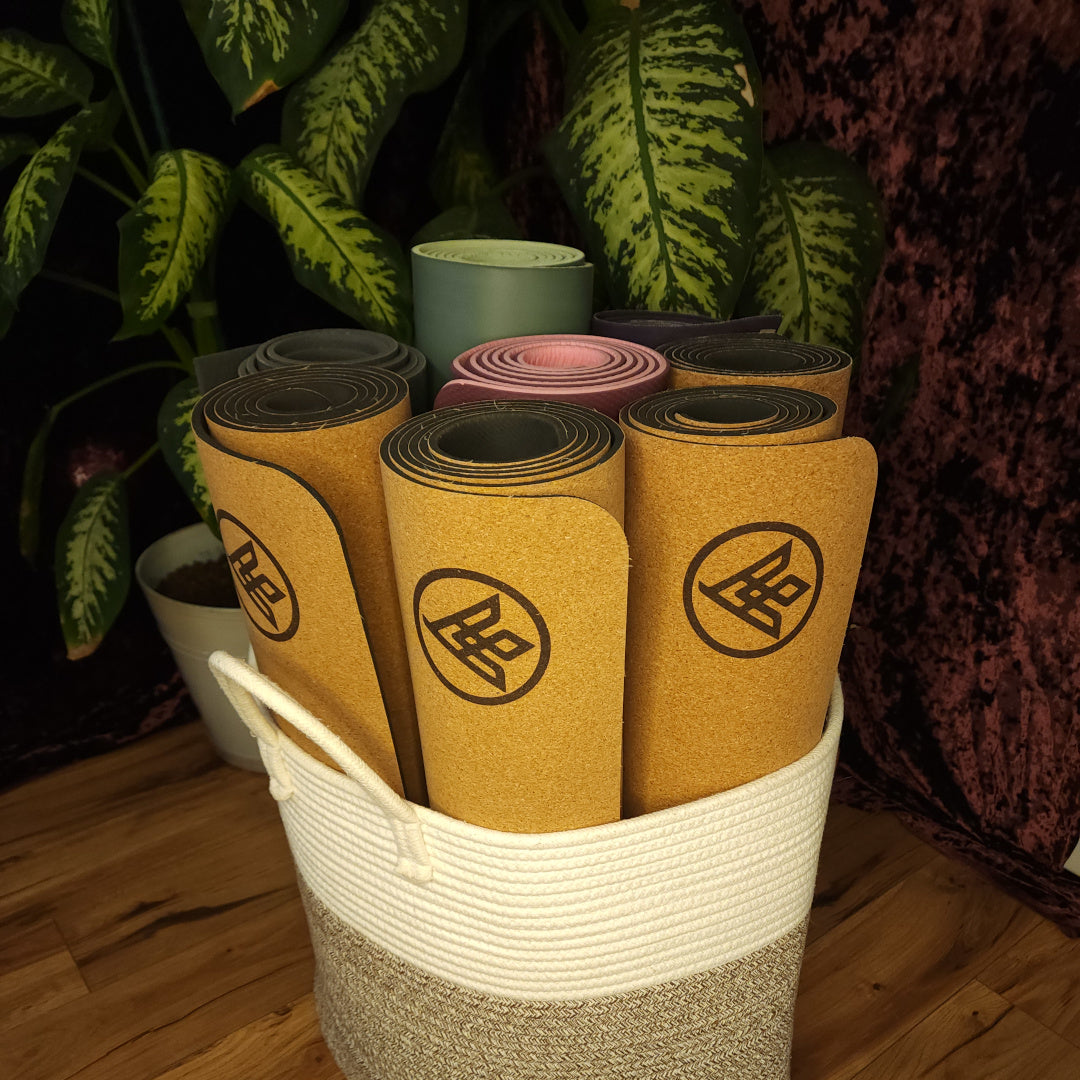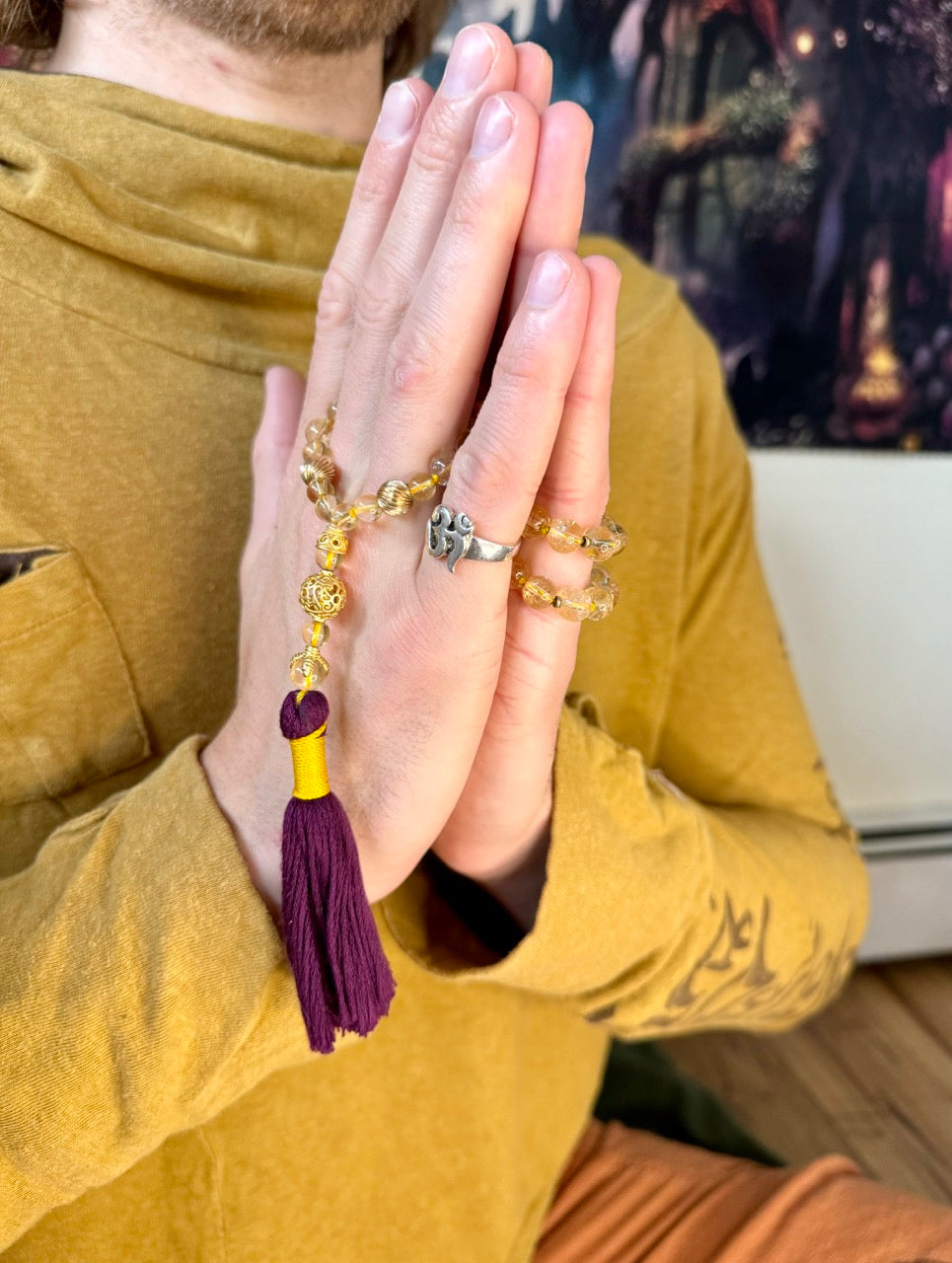Svadhisthana (Sacral Chakra)
Jack UtermoehlShare
Svadhisthana is the second chakra in the yogic energy system, located in the pelvic region just below the navel.
It is associated with creativity, emotional expression, sensuality, and the flow of water within the body and psyche.
This chakra governs our capacity to feel deeply, form connections, and enjoy the pleasures of life—while also maintaining emotional balance and integrity.
Jewelry Designed for Your Practice
We created this collection to honor the wisdom and beauty of yoga. Each piece is crafted with intention to support your journey, on and off the mat.
Etymology and Meaning
Sanskrit Spelling: स्वाधिष्ठान
Root Word: "Sva" (self) + "Adhisthana" (abode or dwelling)
Translation Variations: One’s own seat, base of the self
Pronunciation: Svādhisthāna [SVAH-dish-TAH-nah]
Svadhisthana is understood as the energetic seat of identity and feeling—where desire, intimacy, and creative impulse originate and flow.

Symbolism and Elements
Element: Water — fluid, adaptable, flowing
Color: Orange — vitality, joy, movement
Seed Sound (Bija Mantra): Vam
Associated Sense: Taste
Location: Lower abdomen, hips, sacral plexus
Petals: 6 lotus petals — representing modes of desire
Mudra and Practices
Mudra: Jala Mudra (Gesture of Water) — joins the pinky finger with the thumb to invoke fluidity and emotional balance.
Practical Application
In Yoga Practice
- Incorporate flowing movements like hip circles, gentle vinyasa, and dance-like transitions
- Focus on poses that open the hips and pelvis: Baddha Konasana (Bound Angle), Malasana (Garland Pose), and Utkata Konasana (Goddess)
- Engage the pelvis and breath to create rhythmic, wave-like movement in the spine
In Daily Life
- Engage in creative activities—art, music, journaling, cooking
- Explore healthy emotional expression and set boundaries in relationships
- Honor pleasure and play without guilt—finding balance between enjoyment and intention
Quotes and Wisdom
"Pleasure is not the enemy of presence—it is one of its gateways."
"When you flow with life rather than resist it, you live from Svadhisthana."
Modern Relevance
In today’s culture of burnout, repression, and overstimulation, Svadhisthana invites us to reconnect with joy, sensation, and emotional truth.
This chakra teaches that creativity and pleasure are not indulgent—they are necessary.
When balanced, Svadhisthana helps us access vulnerability, healthy relationships, and the full spectrum of human feeling.
Related Concepts
Chakras: Svadhisthana is the second of seven chakras in classical yoga philosophy
Jala: The water element—fluid, adaptive, sensual
Samskara: Emotional and sensory impressions are often stored here
How to Work with Svadhisthana
Mindset: Invite flow, creativity, and emotional honesty
Actions: Practice creative expression, engage your senses, and honor cycles
Reflection: Ask, “What am I feeling—and how can I move with it, not against it?”
Suggested Reading
- Wheels of Life by Anodea Judith
- The Radiance Sutras by Lorin Roche
- Eastern Body, Western Mind by Judith Anodea
Conclusion
Svadhisthana is the seat of creative flow and emotional depth.
When open and balanced, it allows us to feel, to express, and to love with honesty.
Working with this chakra is not just about pleasure—it’s about aligning sensation with presence and creativity with purpose.







